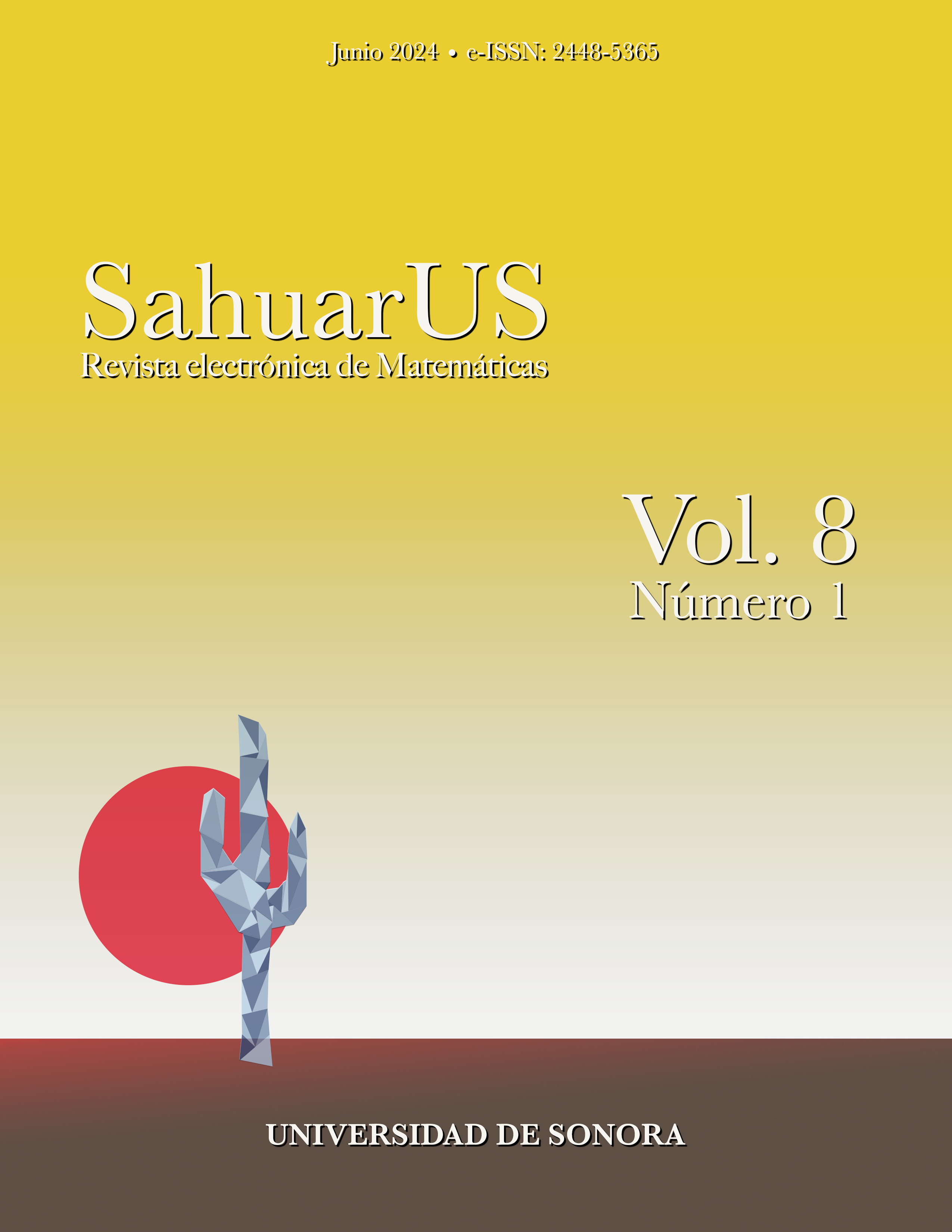Criptografía de los Cifrados de Bloque
DOI:
https://doi.org/10.36788/sah.v8i1.100Palabras clave:
Criptografía, Cifrados de bloque, Data, Aritmética modularResumen
En este trabajo discutiremos la importancia y el funcionamiento de los cifados de bloque en criptografía. Particularmente, presentaremos las herramientas matemáticas en las que dichos cifrados están basados, y cómo la complejidad de las mismas asegura el nivel de seguridad suficiente que exigen las aplicaciones del mundo actual. Entre los cifrados de bloque que se discutirán, se encuentra el Data Ecryption Standard, el cual fue el cifrado de bloque más utilizado desde la década de los 80’s hasta finales de los 90’s.
Descargas
Citas
E. Barker and N. Mouha, "Recommendation for the Triple Data Encryption Algorithm (TDEA) Block Cipher," Special Publication (NIST SP) 800-67 Rev. 2., pp. 1{25, 2017. DOI: 10.6028/NIST.SP.800-67r2. Available: https://doi.org/10.6028/NIST.SP.800-67r2 DOI: https://doi.org/10.6028/NIST.SP.800-67r2
E. Barker and A. Roginsky, "Transitioning the Use of Cryptographic Algorithms and Key Lengths," Special Publication (NIST SP) 800-131A Rev. 2., pp. 1-27, 2019. DOI: 10.6028/NIST.SP.800-131Ar2. Available: https://doi.org/10.6028/NIST.SP.800-131Ar2 DOI: https://doi.org/10.6028/NIST.SP.800-131Ar2
D. Coppersmith, "The Data Encryption Standard (DES) and its strength against attacks," IBM Journal of Research and Development, vol. 38, no. 3, pp. 243{250, 1994. DOI: 10.1147/rd.383.0243. Available: https://doi.org/10.1147/rd.383.0243 DOI: https://doi.org/10.1147/rd.383.0243
J. A. de la Peña, Algebra en todas partes. Fondo de Cultura Económica, 1999.
J. v. z. Gathen, CryptoSchool, 1st ed. Springer Berlin, Heidelberg, 2016, https://doi.org/10.1007/978-3-662-48425-8 DOI: https://doi.org/10.1007/978-3-662-48425-8
L. C. Grove, Algebra. Academic Press, 1983.
L. K. Grover, "A fast quantum mechanical algorithm for database search," in Proceedings of the Twenty-Eighth Annual ACM Symposium on Theory of Computing. New York, NY, USA: Association for Computing Machinery, 1996. https://doi.org/10.1145/237814.237866 DOI: https://doi.org/10.1145/237814.237866
T. Kelly, "The myth of the skytale," Cryptologia, vol. 22, no. 3, pp. 244-260, 1998. https://doi.org/10.1080/0161-119891886902 DOI: https://doi.org/10.1080/0161-119891886902
G. Morales-Luna, "Sobre el telegrama zimmerman," CINVESTAV-IPN, 2016, 21 de diciembre. Available: https://delta.cs.cinvestav.mx/~gmorales/
NIST, "Nist announces rst four quantum-resistant cryptographic algorithms," NIST news, 2022. Available: https://www.nist.gov/news-events/news/2022/07/nist-announces-rst-four-quantum-resistant-cryptographic-algorithms
I. M. Niven, H. S. Zuckerman, and H. L. Montgomery, An Introduction to the Theory of Numbers, 5th ed. Jhon Wiley, 1991.
C. Paar, J. Pelzl, and T. Guneysu, Understanding Cryptography, 2nd ed. Springer Berlin, Heidelberg, 2024. https://doi.org/10.1007/978-3-662-69007-9 DOI: https://doi.org/10.1007/978-3-662-69007-9
F. Russel, Information Gathering in Classical Greece. University of Michigan Press,1999. DOI: https://doi.org/10.3998/mpub.23087
Descargas
Publicado
Cómo citar
Número
Sección
Licencia
Derechos de autor 2019 SAHUARUS. Revista Electrónica de Matemáticas. ISSN: 2448-5365

Esta obra está bajo una licencia internacional Creative Commons Atribución-NoComercial-SinDerivadas 4.0.
Los artículos publicados por Sahuarus. Revista Electrónica de Matemáticas se distribuye bajo una Licencia Creative Commons Atribución-NoComercial-SinDerivadas 4.0 Internacional, la cual permite la distribución y el uso del material publicado citando la fuente de la que proviene, prohibe la modificación y el uso con fines comerciales.







